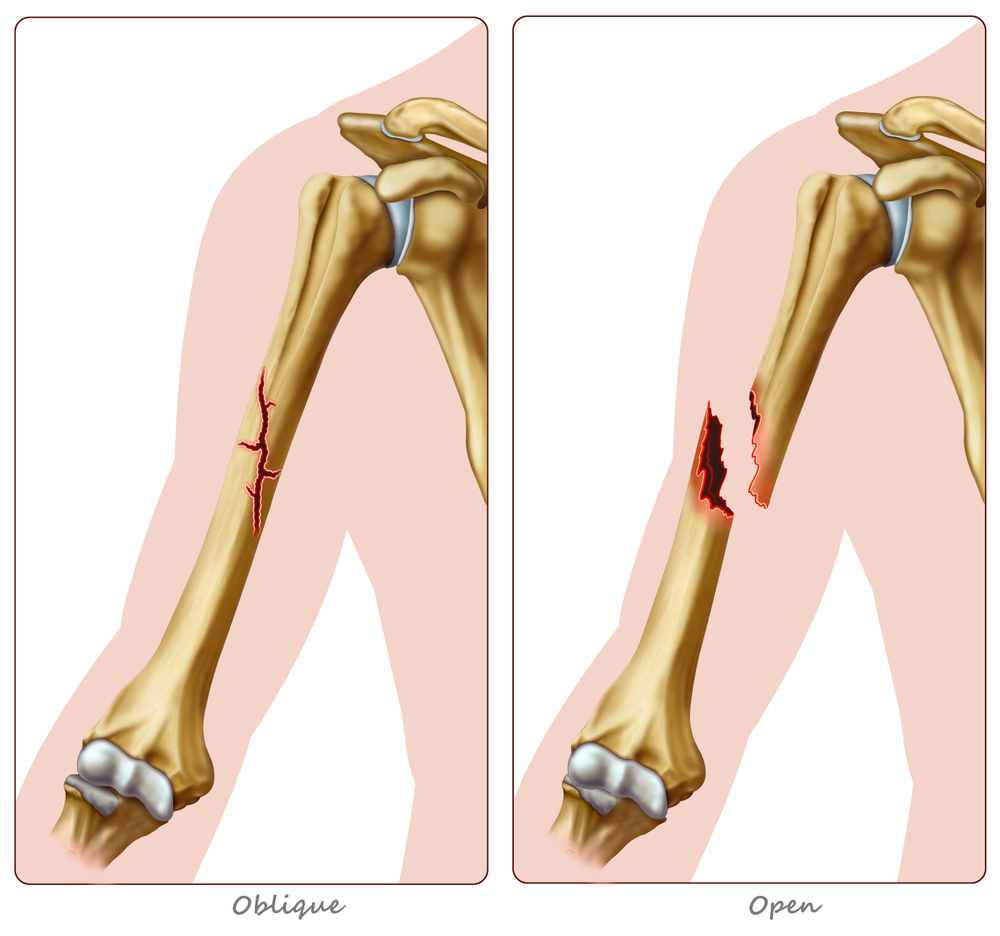Mark Kopec Now
Humerus Fracture
Humerus Fractures: Anatomy, Treatment, Risks, and Complications in the Context of Medical Malpractice
Welcome to the Kopec Law Firm’s comprehensive website page on humerus fractures. Here we will explore the anatomy of the humerus, and discuss various types of fractures. We also delve into treatment options and shed light on the associated risks and complications. Additionally, we will address these aspects within the context of medical malpractice and the need to consult the Baltimore humerus fracture lawyer.
Humerus Anatomy
The humerus is the long bone located in the upper arm, connecting the shoulder joint to the elbow joint. It consists of three main parts. These are the proximal end (shoulder region), the shaft (middle portion), and the distal end (elbow region). Understanding the anatomy of the humerus is crucial in diagnosing and treating fractures effectively.

Humerus Fractures
Humerus fractures occur when there is a break in the continuity of the humerus bone. These fractures can be classified into different types based on their location and severity, such as proximal humerus fractures, midshaft humerus fractures, and distal humerus fractures. Each type requires specific evaluation and treatment approaches.
Doctors for Diagnosis of Humerus Fractures
A humerus fracture is a break in the upper arm bone. Prompt and accurate diagnosis is crucial for proper treatment and healing. The following types of doctors generally diagnose humerus fractures:
- Emergency Room Physician: If the fracture occurs due to a traumatic event, you will likely be seen by an emergency room physician first. They will assess your condition, stabilize the fracture, and may order initial imaging tests like X-rays.
- Orthopedic Surgeon: Orthopedic surgeons specialize in treating bone, joint, and muscle injuries. They will likely take over your care after the initial assessment and may order additional imaging tests like CT Scans or MRIs to get a more detailed view of the fracture.
Doctors for Treatment of Humerus Fractures
The type of treatment for a humerus fracture will depend on the severity and location of the break. The following types of doctors may be involved in your treatment:
- Orthopedic Surgeon: As mentioned earlier, orthopedic surgeons play a key role in treating humerus fractures. They may recommend non-surgical treatments. These include immobilization with a sling or cast. Alternatively, there are surgical interventions like open reduction internal fixation (ORIF) to repair the fracture.
- Physical Therapist: Physical therapists can help you regain strength, range of motion, and function in your arm after the fracture has healed. They will design a personalized rehabilitation program to meet your specific needs.
- Pain Management Specialist: In some cases, pain management specialists may be consulted to help manage pain and discomfort associated with the fracture and its treatment.
Treatment of Humerus Fractures
The treatment of humerus fractures depends on various factors. These include the type and location of the fracture, the patient’s age and overall health, and the presence of any associated injuries. Non-surgical treatment options may include immobilization with a cast or brace, pain management, and physical therapy. Surgical interventions, such as open reduction and internal fixation (ORIF) or external fixation, may be necessary for more complex fractures.
Risks and Complications
While humerus fractures can often be successfully treated, there are potential risks and complications that patients should be aware of. These may include:
- Infection: Surgical procedures carry a risk of infection, which can delay healing and require additional treatment.
- Nonunion or Delayed Union: In some cases, the fractured bone may not heal properly or may take longer than expected to heal.
- Malunion: Improper alignment during the healing process can result in deformities or functional limitations.
- Nerve or Blood Vessel Damage: Fractures near nerves or blood vessels can lead to sensory or motor deficits if not properly managed.
- Shoulder Stiffness: Immobilization or prolonged lack of movement can result in shoulder stiffness and reduced range of motion.
Context of Medical Malpractice
In the unfortunate event of medical malpractice related to humerus fractures, it is essential to consult with legal professionals who specialize in this area. We can assess the circumstances, evaluate the standard of care provided, and determine if negligence or substandard treatment occurred. Seeking legal advice can help patients understand their rights and pursue appropriate legal action if necessary.
Potential Medical Malpractice Claims Related to Humerus Fractures
Medical malpractice occurs when a healthcare professional fails to provide care that meets the standard of care, resulting in harm to the patient. Here are some potential medical malpractice claims related to humerus fractures:
- Delayed or Misdiagnosis: If a fracture is not diagnosed promptly or is misdiagnosed, it can lead to delayed treatment and complications like nonunion (failure of the bone to heal) or malunion (healing in an abnormal position).
- Improper Treatment: If the chosen treatment is inappropriate for the type of fracture or is performed negligently, such as surgical error, it can lead to complications like nerve damage, infection, or poor healing.
- Failure to Monitor: If the healthcare provider fails to monitor the healing process and identify complications early on, it can lead to more serious problems and the need for additional surgery.
- Failure to Obtain Informed Consent: Before any procedure, the healthcare provider must obtain informed consent from the patient. This involves explaining the risks, benefits, and alternatives to the procedure. Failure to do so can be grounds for a medical malpractice claim.
If you believe you have been a victim of medical malpractice related to a humerus fracture, it is important to consult with an experienced medical malpractice attorney to discuss your case.
Next Step: Call the Baltimore Humerus Fracture Lawyer
This website page has provided an overview of humerus fractures, including information about humerus anatomy, treatment options, risks, and complications. We have also highlighted the importance of considering medical malpractice in cases where substandard care may have contributed to adverse outcomes.
Visit the free consultation page or video. Then contact the Kopec Law Firm at 800-604-0704 to speak directly with Attorney Mark Kopec. He is a top-rated Baltimore medical malpractice lawyer. The Kopec Law Firm is in Baltimore and pursues cases throughout Maryland and Washington, D.C.





